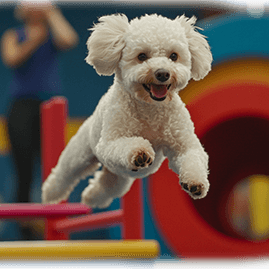Training German Shepherds: A Complete Guide to Raising a Well-Behaved Companion
German Shepherds are renowned for their intelligence, loyalty, and work ethic, making them one of the most trainable dog breeds. Whether you’re training a German Shepherd as a family pet, a working dog, or a service animal, the key to success is a combination of patience, consistency, and positive reinforcement. In this guide, we’ll cover everything from basic obedience to advanced training techniques, and how to overcome common training challenges with German Shepherds.
Why Training a German Shepherd is Unique
German Shepherds are naturally driven to work, which makes training both a necessity and a joy. Their eagerness to learn and their ability to grasp commands quickly make them great candidates for obedience training, but they also require mental stimulation to prevent boredom-related behaviors.

- Intelligence – German Shepherds rank among the most intelligent dog breeds, capable of learning new commands in as few as five repetitions.
- Work Ethic – Originally bred as herding dogs, they thrive on tasks and challenges, so they excel in advanced obedience, agility, and service work.
- Protective Instincts – They are naturally protective of their families, making early socialization and training critical to prevent over-guarding.
Training Principles for German Shepherds
To successfully train your German Shepherd, you need to build a foundation of trust and consistency. Here are some key training principles to keep in mind:
- Positive Reinforcement – Reward your dog with treats, toys, or praise when they perform the desired behavior. German Shepherds respond especially well to positive reinforcement. (Amazon affiliate link)
- Consistency – Use the same commands and training methods every time. Make sure all family members are on the same page to avoid confusing the dog.
- Mental Stimulation – Incorporate problem-solving tasks into your training routine, such as puzzle toys or advanced tricks, to keep your German Shepherd mentally engaged. (Amazon affiliate link)
Basic Obedience Training
Starting with basic commands is essential for ensuring your German Shepherd understands expectations and can follow orders in different environments. Here are the most important commands every German Shepherd should know:
- Sit – This basic command is one of the first you should teach. It’s a great starting point for focusing their attention.
- Stay – This helps control your dog’s movement and is important for safety, especially in public places.
- Come – A crucial recall command that ensures your dog returns to you, particularly when off-leash.
- Heel – This command ensures your dog walks by your side without pulling on the leash, an important skill for a strong breed like the German Shepherd.

Leash Training
German Shepherds are naturally strong and energetic, so leash training is crucial for controlling their movements during walks. Here’s how to leash train your German Shepherd:
- Start Early – Begin leash training when your dog is a puppy. Use positive reinforcement whenever they walk calmly by your side. (Amazon affiliate link)
- Practice “Heel” – Teach your dog the “heel” command to prevent them from pulling or lunging.
- Stop and Start – If your dog pulls on the leash, stop walking. Only resume once the leash is slack. This teaches them that pulling gets them nowhere.
Crate Training
Crate training can be highly effective for German Shepherds, as it gives them a safe space to retreat and helps with housebreaking.
- Choose the Right Size – The crate should be big enough for your dog to stand up, turn around, and lie down comfortably. (Amazon affiliate link)
- Positive Association – Make the crate a positive place by feeding meals inside and leaving toys and treats.
- Gradual Introduction – Start with short periods inside the crate and gradually increase the time. Avoid using the crate as a punishment.
Socialization
Early socialization is critical for German Shepherds due to their natural protective instincts. Without proper socialization, they can become overprotective or anxious around new people and environments.
- Expose to New Environments – Take your puppy to different locations, such as parks, pet-friendly stores, and walking paths.
- Meet New People and Animals – Introduce your German Shepherd to a variety of people, dogs, and other animals to help them become well-rounded and confident.
- Positive Experiences – Always ensure socialization experiences are positive. Reward calm, non-aggressive behavior with treats and praise.

Advanced Training
Once your German Shepherd has mastered basic obedience, you can move on to more advanced training, such as:
- Agility Training – German Shepherds excel in agility courses, which provide both physical and mental stimulation. This type of training involves running through obstacle courses, which sharpens their agility and obedience. (Amazon affiliate link)
- Guard Dog Training – For those looking to train their German Shepherd as a protection or guard dog, professional training is essential. This training focuses on controlled aggression, obedience, and protective behaviors.
- Service Dog Training – Many German Shepherds are used as service animals. They can be trained to assist individuals with disabilities by performing tasks like retrieving objects, guiding, or alerting to medical conditions.
Common Training Challenges
Like any dog breed, German Shepherds come with their own set of training challenges. Here are some common problems you might encounter and how to address them:
- Separation Anxiety – German Shepherds are known for being loyal and attached to their families, which can lead to separation anxiety. Crate training and gradually increasing the time your dog is left alone can help.
- Barking – Some German Shepherds may bark excessively, especially if they’re bored or anxious. Address this by ensuring they have enough physical exercise and mental stimulation each day.
- Leash Pulling – Due to their strength and energy, leash pulling is a common issue. Teaching the “heel” command and using positive reinforcement for walking beside you can resolve this.

Recommended Resources for Training German Shepherds
- Books – The German Shepherd Handbook (Amazon affiliate link) by Linda Whitwam offers in-depth training techniques for this breed.
- Professional Trainers – Consider hiring a certified dog trainer, especially if you’re looking to train your German Shepherd for advanced work like protection or service.
Final Thoughts
Training a German Shepherd can be a rewarding experience, as these dogs are highly intelligent and eager to learn. With the right approach, patience, and consistency, you’ll be able to guide your German Shepherd into becoming a well-behaved, confident, and happy companion.
Affiliate Disclosure
This post may contain affiliate links, which means I earn from purchases made through links. Please see the privacy policy page for more details.





